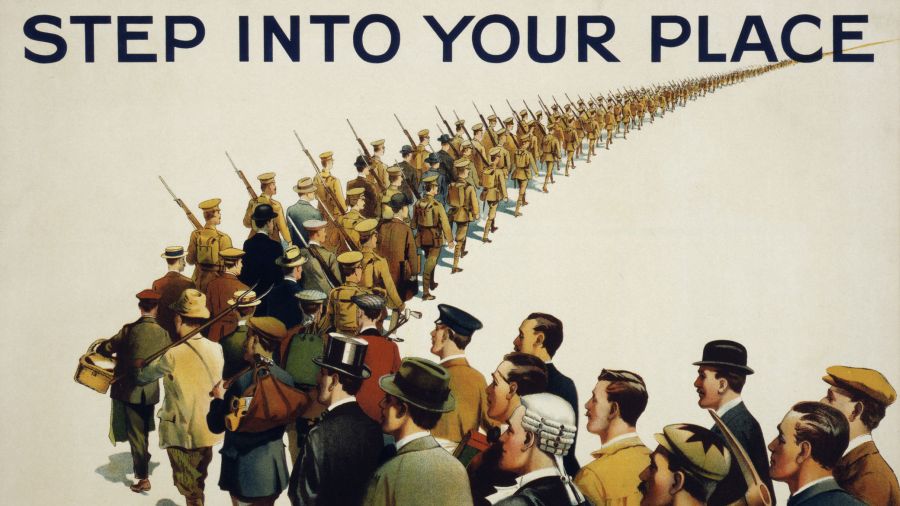It’s Not the Really Blatant Propaganda That Gets You
One of my favorite follows on Twitter right now is a smallish account run by an anti-imperialist activist who goes by “Left I on the News”, because he has a real knack for going through articles in the mainstream press and highlighting the mundane little manipulations we’re fed each day to shape our worldview in alignment with the US empire.
One story he singled out recently was a New York Times article titled “Russia Fires Drones and Missiles at Southern Ukraine,” which opens with the line, “Russian forces launched drones and missiles at cities in southern Ukraine from the Black Sea early Tuesday, Ukrainian officials said, a day after Moscow blamed Kyiv for an attack on a bridge linking the occupied Crimean Peninsula to Russia.”
Can you spot anything funny in that sentence? It’s not super obvious at first glance.
“Look how the NYT phrases this subhead to make Russia sound extra evil,” Left I tweeted with a screenshot of the article. “Not ‘a day after Kyiv attacked the Kerch Bridge’, but a day after Russia blamed them for doing it (as if it’s just some wild accusation). Remember — the most effective propaganda is the subtlest.”
“The most effective propaganda is the subtlest” is a phrase you should try to remember, because it’s so very true.
It is indeed ridiculous to try to frame this as some wild accusation by Russia, as though Moscow should have remained open to the possibility that the bridge was struck by Bolivia or Nepal. CNN reports that Ukrainian officials have taken credit for the attack, and just days ago Ukraine’s deputy defense minister publicly acknowledged that Ukraine was behind last year’s attack on the very same bridge. No serious person doubts that Ukraine was behind the attack, including those who support Ukraine.
But that subtle manipulation didn’t really stand out when you first saw it, did it?
As we’ve discussed previously, these subtle little adjustments of perception are what constitutes the vast majority of the propaganda westerners ingest through the news media from day to day. This is because the really overt, ham-fisted propaganda isn’t what’s effective; what’s effective is those sneaky little lies that slide in unchecked underneath people’s critical thinking faculties.
Contrast the above example with the response we’ve been seeing to Yeonmi Park, whose outlandish, larger-than-life propagandistic lies about what it’s like to live in North Korea have turned her into an internet meme. She’s become so widely mocked that even The Washington Post, among the first to help amplify her as a trustworthy North Korean defector after her arrival in the US in 2014, is now openly questioning her credibility.
This is because propaganda only works if it doesn’t ring people’s cognitive alarm bells. You can’t slide propaganda down people’s throats if it triggers their critical thinking gag reflex. If you want to poison someone’s food, you can only pull off the deed if they don’t taste the poison or throw it up before it takes effect.
So most propaganda isn’t of the Yeonmi Park “communists are so poor that they have to eat mud and get out of the train and push it because there’s no electricity” variety. It’s subtle. It’s these tiny little adjustments where US allies are reported on more sympathetically than US enemies, claims made by unaligned governments are reported with much more scrutiny and skepticism than aligned governments, and the sins which take place within the US-centralized power structure are overlooked while those outside it are amplified and condemned.
We’ve been ingesting these tiny little manipulations all our lives like microplastics in our water supply, and they build up within our reality tunnels to significantly warp our perception of what’s going on in the world.
And the fact that it’s been so many tiny little lies over years and years means it’s a lot harder to extract all the perception management from our worldview once we’ve discovered that it’s happening. If it was just a few really big lies we could reorient ourselves toward truth fairly quickly just by recognizing them, but because it’s so very many tiny manipulations it takes years of sincere work to fully free yourself from all the distortions and false assumptions you grew up with.
But it’s worth doing, because positive change can only come from an awareness of what’s true, whether you’re talking about individuals or humanity as a whole. Our task as humans is to come to a truth-based relationship with reality to the furthest extent possible, and that means fearlessly diving headfirst into the long, hard slog of sorting out fact from fiction, one lie at a time, no matter how subtle.







